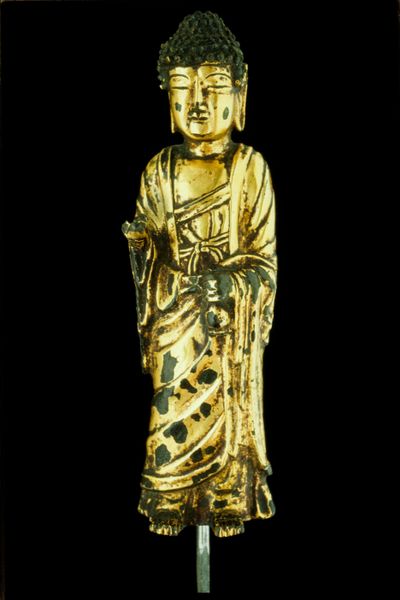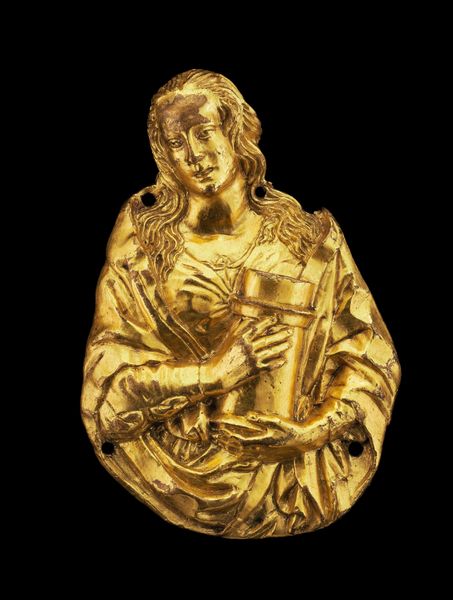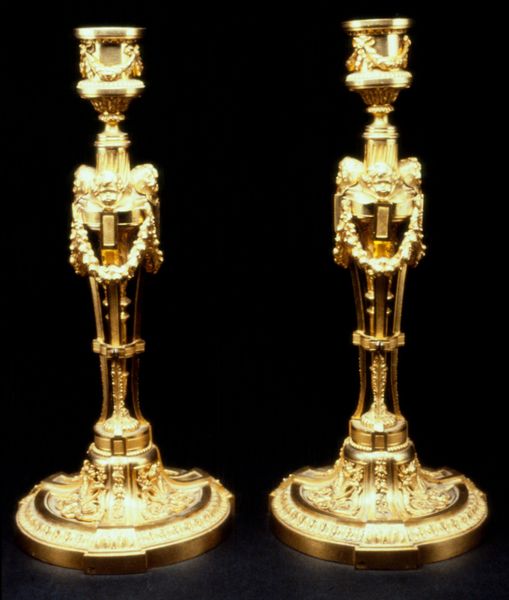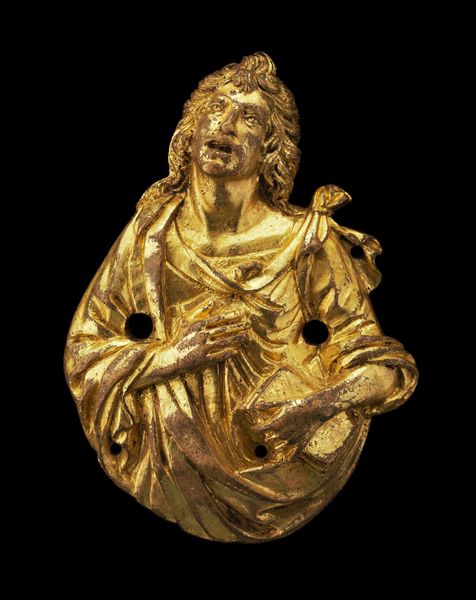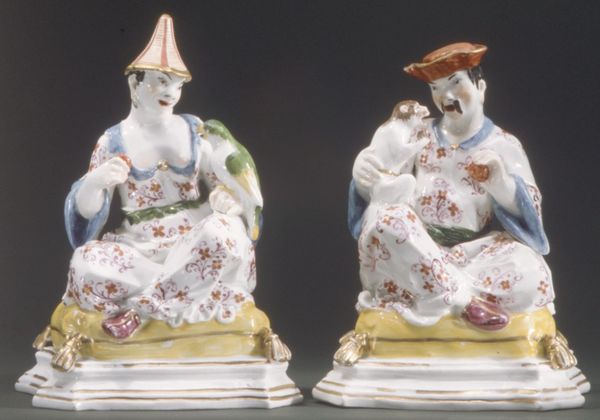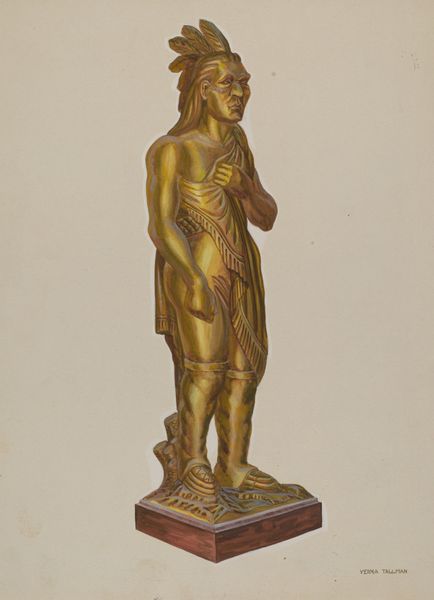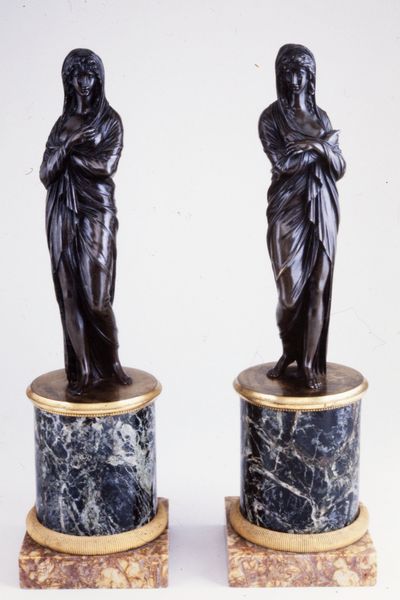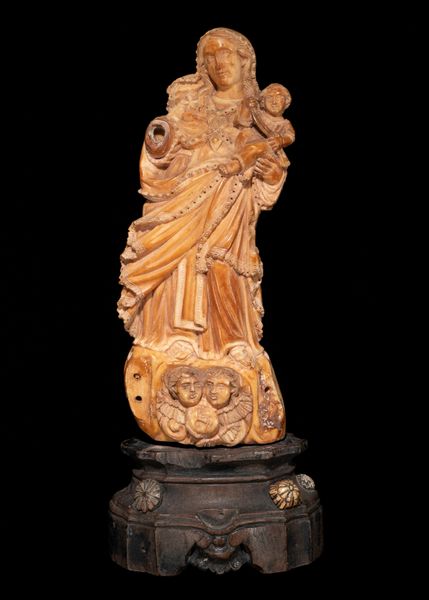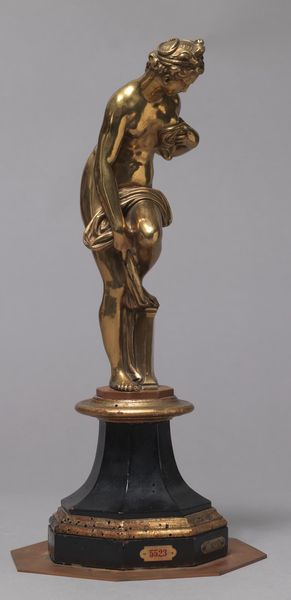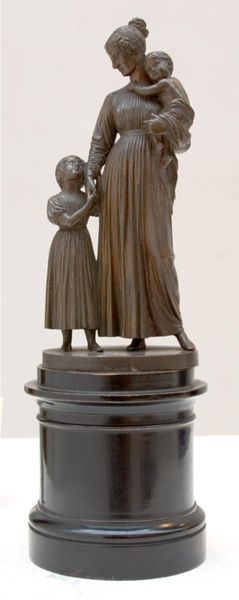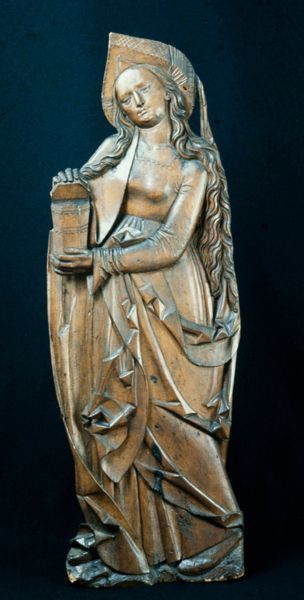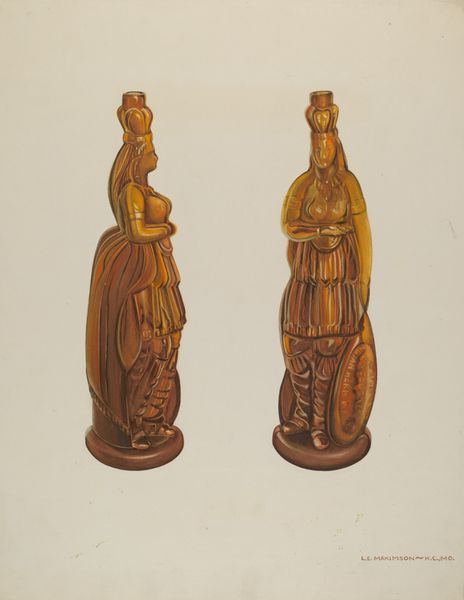
Dimensions: 10 3/4 x 4 1/4in. (27.3 x 10.8cm)
Copyright: Public Domain
Curator: Well, hello there! Glimmering out of the dark, aren’t they? Like two golden echoes. Editor: Indeed. What are we admiring? They radiate calm. Curator: These are two sculptures titled "Lohan," dating back to around the 18th century. You can find these bronze figures here at the Minneapolis Institute of Art. Editor: Eighteenth century, eh? You know, looking at them, I am struck by how their placid expression stands in contrast to their elaborate robes and the intricate pedestals. Curator: Right? It's like serenity grounded in material richness. As if saying enlightenment can be found even amidst splendor. But speaking of splendor, these aren't your garden-variety depictions. A Lohan, in Buddhist tradition, has reached enlightenment, sure, but it’s with the conscious choice to remain in this world, to aid others on their path. Not just vanishing into bliss. Editor: A public service mystic, almost? The material choice contributes to that. The use of bronze – weighty and enduring – emphasizes their role as steadfast guides. Unlike the ethereal promises of other religious art, these figures plant themselves firmly in our reality. Bronze wasn't exactly cheap back then either. It represents an investment, both literally and figuratively, in the perpetuation of specific religious values. What stories did those who commissioned it wish to amplify, I wonder? Curator: Now that's a divine question! Because look closer. It's the little details, see? The subtle differences in hand gestures – each probably signifying a particular teaching or state of being. Or even the slight asymmetry. Each statue seems to pulse with its unique energy, its personal understanding of enlightenment. Like bronze fingerprints. Editor: Yes, it’s as though they embody distinct roles within the community. Perhaps they reflect the donors’ aspirations and understanding of Buddhist values? What does it mean for art to embody moral teachings and public virtues in a society? The statues are thus integrated in social power structures in complex ways, reflecting both religious beliefs and class. Curator: Perhaps that’s why they resonate even today! Far from just glittering ornaments, they pose questions of devotion and social responsibility. Now, tell me, isn't that absolutely… golden? Editor: Very clever. And true! It's fascinating how historical art invites contemporary inquiry.
Comments
No comments
Be the first to comment and join the conversation on the ultimate creative platform.

